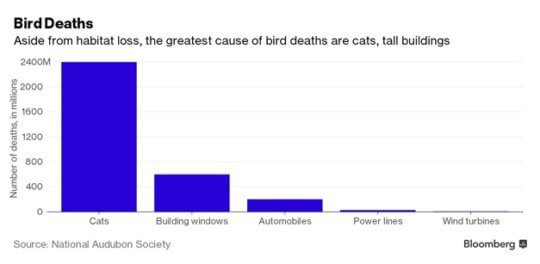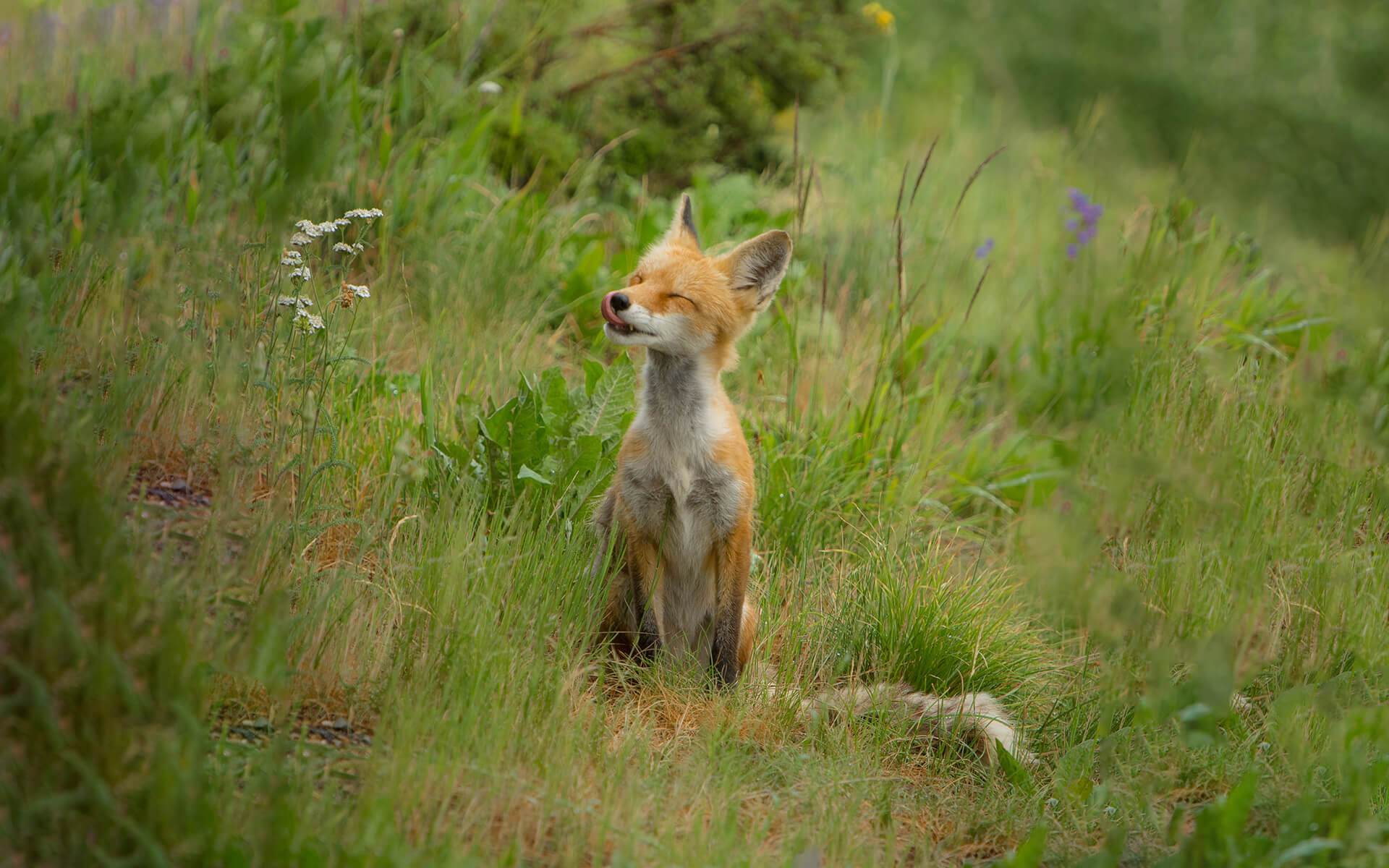Wind energy and birds
Wind power’s impact is extremely small compared to other human-related sources of bird mortality, such as collisions with buildings and communications towers, vehicle strikes, and habitat conversion. Overall, wind causes less than 0.01 percent of all human-related bird deaths in the United States.
Even with its relatively low impacts, the U.S. wind industry holds itself to a higher standard and does more to study, avoid, minimize, and mitigate any wildlife impacts than any other industry. Resulting conservation programs by wind developers save habitat and help protect birds.
Incidental losses at turbine sites will never be more than an extremely small fraction of bird deaths caused by human activities—an estimated 328,000 of the more than 2.5 billion bird mortalities in North America, according to analysis from Bloomberg and The National Audubon Society. Other causes include buildings (676 million), power lines (32 million), cars (214 million), pesticide poisoning, (72 million), and radio and cell towers (6.6 million).

Wind energy and eagles
Eagle fatalities occur at very few wind projects across the country. Significantly more fatalities occur due to lead poisoning, power lines, vehicles, illegal shootings, and other dangers. Over 90 percent of existing wind farms have zero eagle impacts.
The wind industry protects eagles by supporting research on eagle population trends and behavior. Developers evaluate risks to eagles as projects are sited and built. They adjust wind farm design, turbine location, and project operations to reduce the potential for harm.
Only a handful of bald eagles have ever collided with wind turbines in the four-decade history of the U.S. wind industry. Their populations are at the highest level in decades and continue to grow. Golden eagle impacts at wind farms are also uncommon, accounting for less than 5 percent of human caused-deaths in the U.S. with many of those impacts concentrated in small areas of the country, in parts of California and Wyoming. Most impacts occur in the Altamont region of California, at older wind farms built in the 1980s when the relationship between turbines and eagles was not as well understood. Modern turbines are replacing outdated ones, helping to lower eagle impacts in that area by nearly 80 percent.
The Eagle Conservation Plan Guidance for wind energy was developed by the U.S. Department of Interior and USFWS in support of a permitting program for incidental take of eagles. This guidance includes recommendations for evaluating risk to eagles at proposed sites, protocols for pre- and post-construction studies, and options for mitigating impacts. The permitting program requires conservation plans to minimize and mitigate any impact.
Wind energy and bats
This industry has worked with conservation groups for decades to study and better understand impacts to bats. For example in 2003, the American Wind Energy Association and numerous other organizations formed the Bats and Wind Energy Cooperative (BWEC). BWEC researches bat interactions with wind turbines with the goal of reducing bat impacts at wind farms. And in 2008, the industry, along with national conservation organizations like National Audubon Society and the National Wildlife Federation, formed the American Wind and Wildlife Institute, which addresses many wind and wildlife issues, including bats. The U.S. Fish and Wildlife Services’ Land-based Wind Energy Guidelines include information on pre- and post-construction analysis and recommendations related to bats. For more information, see American Wind Wildlife Institute’s Issue Brief on Bats and Wind Energy and Bat Conservation International’s description of BWEC.

